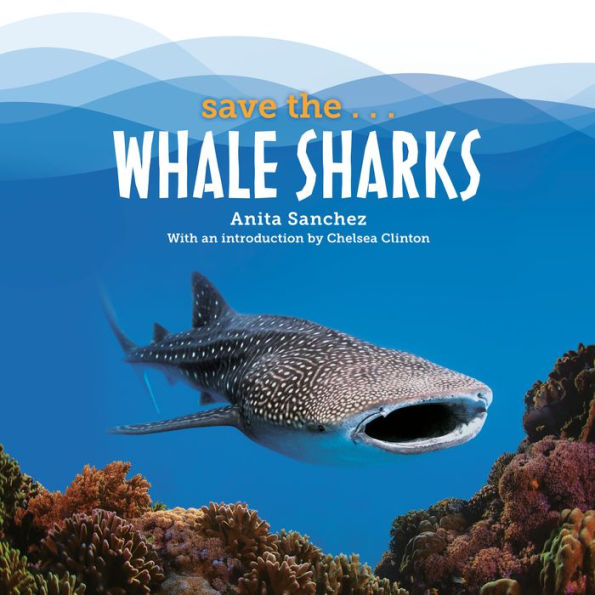"Eloquent and informative." –Kirkus Reviews
Whale sharks have swum and chomped their ways into kids' hearts. With this audiobook, listeners can become whale shark experts and learn how to save the animals they love. Featuring an introduction from Chelsea Clinton!
Did you know that whale sharks are sometimes called domino fish because of the spots on their backs? How about that the smallest recorded whale shark was only fifteen inches long? Or that whale sharks have teeth on their eyes?
Perfect for all animal lovers--and whale shark fans in particular--this audiobook is filled with information that young listeners will love to learn. From where whale shark habitats are found to what it's like to be a whale shark to why whale sharks are endangered and who has been working hard to save them, this audiobook gives listenersall the facts they know to become whale shark experts.
Complete with a list of fun whale shark facts and things that kids can do right this very moment to help save whale sharks from extinction, this audiobook, with an introduction by animal advocate Chelsea Clinton, is a must for every family, school, and community library.
"1141014793"
Did you know that whale sharks are sometimes called domino fish because of the spots on their backs? How about that the smallest recorded whale shark was only fifteen inches long? Or that whale sharks have teeth on their eyes?
Perfect for all animal lovers--and whale shark fans in particular--this audiobook is filled with information that young listeners will love to learn. From where whale shark habitats are found to what it's like to be a whale shark to why whale sharks are endangered and who has been working hard to save them, this audiobook gives listenersall the facts they know to become whale shark experts.
Complete with a list of fun whale shark facts and things that kids can do right this very moment to help save whale sharks from extinction, this audiobook, with an introduction by animal advocate Chelsea Clinton, is a must for every family, school, and community library.
Save the...Whale Sharks
Whale sharks have swum and chomped their ways into kids' hearts. With this audiobook, listeners can become whale shark experts and learn how to save the animals they love. Featuring an introduction from Chelsea Clinton!
Did you know that whale sharks are sometimes called domino fish because of the spots on their backs? How about that the smallest recorded whale shark was only fifteen inches long? Or that whale sharks have teeth on their eyes?
Perfect for all animal lovers--and whale shark fans in particular--this audiobook is filled with information that young listeners will love to learn. From where whale shark habitats are found to what it's like to be a whale shark to why whale sharks are endangered and who has been working hard to save them, this audiobook gives listenersall the facts they know to become whale shark experts.
Complete with a list of fun whale shark facts and things that kids can do right this very moment to help save whale sharks from extinction, this audiobook, with an introduction by animal advocate Chelsea Clinton, is a must for every family, school, and community library.
Did you know that whale sharks are sometimes called domino fish because of the spots on their backs? How about that the smallest recorded whale shark was only fifteen inches long? Or that whale sharks have teeth on their eyes?
Perfect for all animal lovers--and whale shark fans in particular--this audiobook is filled with information that young listeners will love to learn. From where whale shark habitats are found to what it's like to be a whale shark to why whale sharks are endangered and who has been working hard to save them, this audiobook gives listenersall the facts they know to become whale shark experts.
Complete with a list of fun whale shark facts and things that kids can do right this very moment to help save whale sharks from extinction, this audiobook, with an introduction by animal advocate Chelsea Clinton, is a must for every family, school, and community library.
14.0
In Stock
5
1
14.0
In Stock

Editorial Reviews
Product Details
| BN ID: | 2940178796269 |
|---|---|
| Publisher: | Penguin Random House |
| Publication date: | 09/13/2022 |
| Series: | Save the... |
| Edition description: | Unabridged |
| Age Range: | 5 - 8 Years |
Videos

From the B&N Reads Blog

